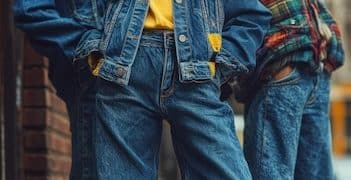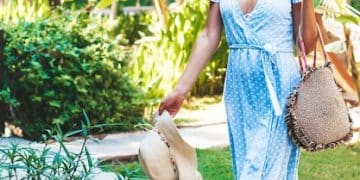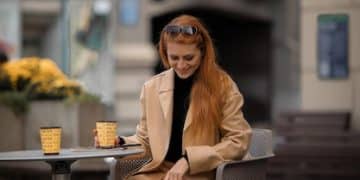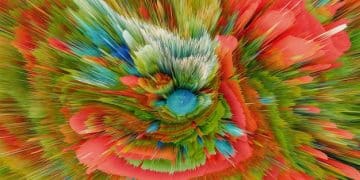Seasonal Style Guide: Outfit Inspiration for Spring, Summer, Fall, and Winter
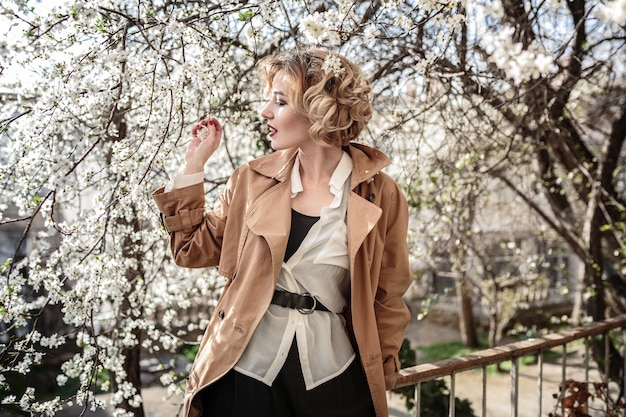
Anúncios
Achieving optimal seasonal style involves understanding key fashion trends and practical considerations for spring, summer, fall, and winter, ensuring comfort, versatility, and adherence to current aesthetic sensibilities.
Dressing for the seasons can sometimes feel like a puzzle, but with the right guidance, it transforms into an exciting opportunity for self-expression. This comprehensive Seasonal Style Guide: Outfit Inspiration for Spring, Summer, Fall, and Winter aims to help you navigate the nuances of fashion throughout the year, ensuring you stay effortlessly stylish and comfortable, no matter the weather.
Each season brings its unique charm and, consequently, its distinct sartorial demands. From the lighter fabrics of spring and summer to the cozy layers of fall and winter, understanding how to adapt your wardrobe not only enhances your personal style but also ensures practicality. This guide delves into essential tips, fabric choices, and specific outfit ideas to keep your look fresh and relevant throughout the entire year.
Embracing Spring Fashion: Lightness and Renewal
Spring is a season of rebirth, and your wardrobe should reflect this sense of freshness and new beginnings. After the long chill of winter, it’s time to shed heavy layers and welcome lighter fabrics, brighter colors, and playful patterns. The key to spring dressing lies in versatility and layering, as the weather can often be unpredictable with warm afternoons and cooler evenings.
Think about transitional pieces that can easily be added or removed. A lightweight trench coat, for example, is a quintessential spring item that offers both style and practicality. Denim jackets are another excellent choice, providing a casual yet chic layer that pairs well with almost anything. Opt for natural fibers like cotton, linen, and light wool blends that allow your skin to breathe while offering subtle warmth.
Color Palettes and Prints
When it comes to colors, spring invites a palette of pastels, fresh neutrals, and vibrant floral prints. Soft blues, mint greens, blush pinks, and cheerful yellows dominate the scene. These hues evoke a sense of calm and optimism, perfectly mirroring the blooming natural world around us. Floral patterns, of course, are a timeless spring staple, but consider also abstract prints, polka dots, and subtle stripes for variety.
- Pastels: Soft blues, pinks, greens, and yellows for a gentle, fresh look.
- Neutrals: Beige, cream, and white serve as excellent bases for colorful accents.
- Floral Prints: From delicate small prints to bold, large-scale blooms, a spring essential.
- Stripes and Polka Dots: Classic patterns that add a playful touch without being too overwhelming.
Consider pairing a pastel-colored midi skirt with a crisp white blouse and comfortable block-heeled sandals. For a more casual outing, slim-fit jeans can be elevated with a floral printed top and a lightweight cardigan. Don’t forget accessories like scarves, which can add a pop of color or print and also provide an extra layer of warmth when needed. Footwear should transition from winter boots to lighter options like loafers, ballet flats, and stylish sneakers.
Spring showers are also a consideration, so a stylish pair of waterproof boots or a chic umbrella can be both functional and fashionable. The trick is to feel put-together without feeling overly bundled. The mood of spring fashion is lighthearted and optimistic, encouraging experimentation with new trends while maintaining a timeless elegance.
Summer Chic: Breezy, Bold, and Beautiful
Summer fashion is all about lightness, comfort, and embracing vibrant energy. As temperatures rise, the focus shifts to breathable fabrics, minimal layering, and designs that promote airflow. This season is your opportunity to experiment with bold colors, playful silhouettes, and styles that exude a carefree, vacation-ready vibe. The goal is to stay cool while looking undeniably chic.
Natural fibers are paramount for summer dressing. Cotton, linen, and rayon are excellent choices for their breathability and moisture-wicking properties. Think about flowy dresses, wide-leg pants, and lightweight tops that allow for maximum air circulation. Maxi dresses, jumpsuits, and shorts are quintessential summer components, easily dressed up or down depending on the occasion. Swimwear also becomes a significant part of the wardrobe, transitioning from beach to bar with the right cover-ups and accessories.
Essential Summer Fabrics and Silhouettes
When selecting your summer wardrobe, prioritize fabrics that feel good against your skin and can withstand the heat. Linens are perfect for their airy quality, though they wrinkle easily, adding to their relaxed charm. Cotton offers versatility, while rayon drapes beautifully and feels silky smooth. Silhouettes should be relaxed and non-restrictive, allowing for freedom of movement and comfort.
- Linen: Ideal for shirts, pants, and dresses due to its exceptional breathability.
- Cotton: Versatile and comfortable for t-shirts, shorts, and casual dresses.
- Rayon: Drapes elegantly, often used for flowy skirts and resort wear.
- Loose-fitting Silhouettes: Maxi dresses, palazzo pants, and oversized shirts provide comfort and style.
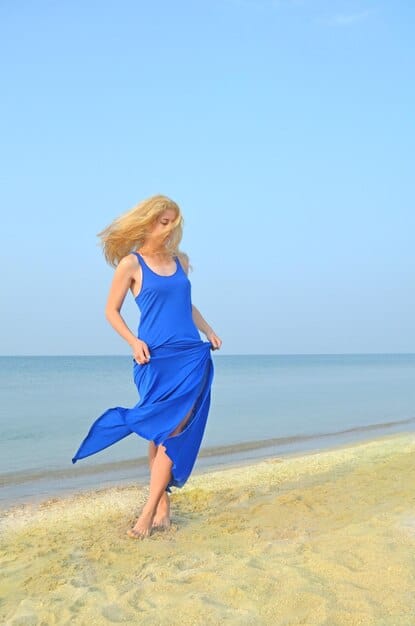
For footwear, sandals, espadrilles, and open-toe heels are practical and stylish. Don’t forget sunglasses and wide-brimmed hats, which are not only fashion statements but also provide essential sun protection. Accessorize with lightweight jewelry, straw bags, and colorful scarves to complete your summer look. Summer evenings might call for a light cardigan or a denim jacket, especially if you’re near the coast or in an air-conditioned environment.
Embrace bold patterns like tropical prints, stripes, and vibrant geometric designs. White remains a summer staple, reflecting light and keeping you cool. Neon colors and bright primary shades can add an exciting pop to your outfits. Remember, summer is about effortless style and enjoying the warm weather, so choose pieces that make you feel good and reflect your personal vibrant energy.
Fall Foundations: Layering and Rich Textures
Fall fashion signals a shift towards richer textures, deeper colors, and the art of layering. As the leaves begin to change and the air turns crisp, your wardrobe should transition from light, airy pieces to more substantial fabrics that offer warmth without being overly heavy. This season is an ideal time to experiment with sophisticated silhouettes and intricate ensembles, building outfits that are both cozy and chic.
Key fabrics for fall include wool, cashmere, corduroy, tweed, and denim. These materials provide warmth and add a tactile dimension to your outfits. Layering becomes crucial, allowing you to adapt to fluctuating temperatures throughout the day. Think about pairing a chunky knit sweater with tailored trousers, or a classic trench coat over a lightweight turtleneck. Blazers and leather jackets are also indispensable, providing structure and warmth.
Autumnal Hues and Layering Techniques
The color palette for fall mirrors the natural beauty of the season. Deep burgundies, forest greens, burnt oranges, mustard yellows, and various shades of brown and gray dominate. These colors create a warm, inviting, and sophisticated aesthetic. Incorporate plaids, houndstooth, and subtle checks for classic fall patterns that add depth and interest to your attire.
- Earth Tones: Browns, ochres, deep greens, and rich reds for a grounded feel.
- Jewel Tones: Sapphire, emerald, and ruby can add a luxurious touch.
- Textured Fabrics: Wool, corduroy, and cashmere for warmth and visual interest.
- Layering Essentials: Turtlenecks, cardigans, blazers, and trench coats for adaptable warmth.
Footwear for fall transitions to boots – ankle boots, knee-high boots, and combat boots all stand out as stylish and practical options. Loafers and comfortable sneakers in darker shades also work well. Accessorize with scarves, beanies, and gloves as the weather gets colder. A stylish handbag in leather or suede can complete a sophisticated fall look, while a durable tote bag is practical for everyday use.
When layering, consider different lengths and textures to create visual interest. For instance, a longer tunic or dress worn under a shorter sweater can add a fashionable dimension. Mix and match patterns and solids to build dynamic outfits. Fall is about embracing comfort and warmth without sacrificing elegance, finding the balance between practical dressing and expressing your unique style through rich textures and inviting colors.
Winter Warmth: Cozy, Elegant, and Practical
Winter fashion is primarily about staying warm and comfortable, but this doesn’t mean sacrificing style. The colder months offer an opportunity to embrace luxurious fabrics, structured outerwear, and cozy accessories. The challenge is to layer effectively and choose pieces that provide insulation while maintaining a polished and elegant appearance. Functionality meets fashion in the depths of winter.
Heavier fabrics such as wool, cashmere, down, and flannel become essential. These materials are renowned for their insulating properties, keeping you warm even in sub-zero temperatures. Outerwear takes center stage, with puffer jackets, wool coats, parkas, and tailored overcoats becoming staples. Investing in a high-quality coat is crucial, as it often defines your entire winter silhouette.
Mastering Winter Layers and Accessories
The color palette for winter often leans towards deeper, richer tones. Darker neutrals like black, charcoal gray, navy blue, and deep browns are popular, offering a sophisticated and versatile base. Pops of jewel tones like emerald green, ruby red, and sapphire blue can add vibrancy to an otherwise subdued wardrobe. Metallics can also be introduced for festive occasions or a touch of glamor.
- Insulating Fabrics: Wool, cashmere, fleece, and down for superior warmth.
- Outerwear: Heavy coats, parkas, and tailored overcoats as key pieces.
- Rich Hues: Black, gray, navy, and deep jewel tones for a sophisticated look.
- Essential Accessories: Scarves, gloves, hats, and warm socks for ultimate comfort.
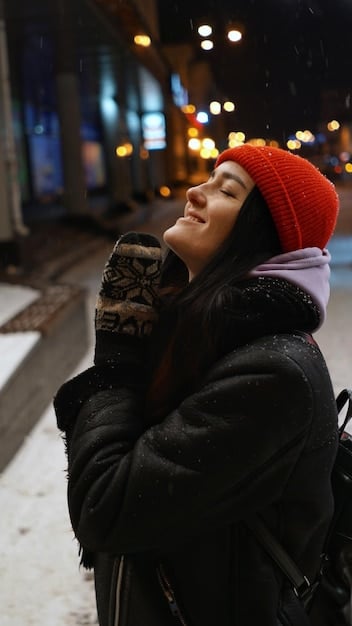
Footwear is critical in winter, with insulated boots being a necessity. Look for options with good grip for icy conditions and waterproof properties to keep your feet dry. Boots lined with shearling or faux fur offer extra warmth and comfort. Accessorizing with chunky knit scarves, cashmere gloves, and stylish hats not only provides extra warmth but also adds personality to your winter ensemble. These elements often become focal points of an outfit.
Layering strategically is key to staying warm without feeling bulky. Start with a thin base layer, add a mid-layer like a sweater or cardigan, and finish with a warm outer coat. This allows you to adjust to indoor and outdoor temperatures more easily. Thermal wear can be a lifesaver for extremely cold days, worn discreetly under your regular clothing. Winter fashion is an art of blending practicality with luxurious textures and refined styles, making bundling up an enjoyable and fashionable experience.
Building a Versatile Seasonal Wardrobe
Creating a truly functional and stylish wardrobe means understanding how to curate pieces that can transition across seasons. While each season has its distinct requirements, certain items offer perennial versatility, forming the backbone of your year-round style. The goal is to maximize your options with fewer, well-chosen items, promoting sustainability and simplifying your daily dressing routine. This approach allows for greater creativity, as you learn to remix and re-purpose pieces in new and exciting ways.
Investing in quality staples is more cost-effective in the long run. These foundational items, often in neutral colors, can be dressed up or down and adapted with seasonal accessories. A well-fitting pair of dark wash jeans, a crisp white button-down shirt, a classic black blazer, and a versatile midi-skirt are examples of pieces that can serve you throughout the year. They act as a canvas upon which you can add seasonal colors, textures, and patterns.
Staple Pieces and Transitional Garments
Think about how items can move from one season to the next with simple adjustments or layering. A sleeveless dress, for example, can be worn on its own in summer, over a turtleneck in fall, or with a chunky cardigan and boots in winter. Identifying these adaptable pieces is key to a versatile wardrobe. This approach not only saves space but also encourages a more mindful approach to fashion, reducing impulse purchases and promoting a more cohesive style.
- Classic Trench Coat: Perfect for spring and fall, easily layered.
- Denim Jacket: A year-round staple, great for casual layering.
- White Button-Down Shirt: Versatile for any season, formal or casual.
- Neutral Knit Sweaters: Essential for layering in cooler months, can be a lighter weight for spring.
- Tailored Trousers: A smart option that works across professional and casual settings.
Beyond clothing, accessories play a crucial role in transitioning outfits. A lightweight scarf can add warmth in spring and fall, while a heavy scarf provides ample protection in winter. Sunglasses are a summer necessity but also useful in sunny winter days. Footwear choices, too, can shift. Ankle boots, for instance, are suitable for both chilly fall days and milder winter temperatures, or even surprisingly cool spring days.
Developing a versatile wardrobe is an ongoing process of refinement. It encourages you to think creatively about your existing pieces and to make conscious decisions about new additions. By focusing on quality, versatility, and thoughtful layering, you can build a collection of clothing that serves you well in every season, year after year, enhancing your personal style while reducing fashion waste.
Sustainable Style for Every Season
Adopting sustainable practices in your seasonal wardrobe goes beyond just looking good; it’s about making conscious choices that benefit the planet and promote ethical consumption. In an industry often criticized for its environmental impact, embracing sustainable style means prioritizing longevity, ethical production, and reducing waste. This approach ensures your fashion choices are both chic and responsible, allowing you to enjoy your seasonal looks with a clear conscience.
One of the most impactful ways to make your wardrobe more sustainable is to invest in high-quality, durable pieces that will last for many seasons, if not years. “Fast fashion” encourages disposable clothing, but choosing garments made from natural, resilient fibers or recycled materials significantly reduces your environmental footprint. Look for certifications and transparency from brands regarding their production processes and supply chains. This ensures that what you buy not only looks good but is also made responsibly.
Eco-Friendly Fabrics and Mindful Consumption
When selecting fabrics, consider organic cotton, linen, hemp, Tencel, and recycled polyester. These materials often have a lower environmental impact compared to conventional alternatives. Organic cotton, for instance, is grown without harmful pesticides, while linen and hemp require less water and are remarkably durable. Understanding the lifecycle of your clothing, from source to disposal, empowers you to make more informed decisions.
- Organic Cotton: Grown without toxic pesticides, better for soil and water.
- Linen & Hemp: Durable, require less water, and naturally breathable.
- Tencel (Lyocell): Made from wood pulp, produced in a closed-loop system, minimizing waste.
- Recycled Materials: Reduces demand for new resources and keeps waste out of landfills.
Another facet of sustainable style is mindful consumption. This means buying less and buying better. Instead of chasing every fleeting trend, focus on building a cohesive wardrobe of versatile pieces that can be mixed and matched across seasons. Explore second-hand shopping, vintage stores, and clothing swaps as excellent ways to refresh your wardrobe without contributing to new production. Repairing and repurposing existing garments also extends their life, reducing the need to buy new items.
Caring for your clothes properly can also significantly extend their lifespan. Following care instructions, washing garments less frequently, and air-drying whenever possible all contribute to sustainability. By adopting a sustainable approach to your seasonal style, you contribute to a more ethical fashion industry and demonstrate that looking fashionable can go hand-in-hand with environmental responsibility. It’s a holistic approach to dressing that benefits both you and the planet.
| Key Season | Styling Essentials |
|---|---|
| 🌸 Spring | Light layers like trench coats, cardigans; pastels, florals. |
| ☀️ Summer | Breathable fabrics (linen, cotton); vibrant colors, flowy dresses. |
| 🍂 Fall | Rich textures (wool, corduroy); layering, earth tones, blazers. |
| ❄️ Winter | Heavy wools, cashmere, down; insulated coats, deep colors, warm accessories. |
Frequently Asked Questions About Seasonal Styling
For summer, the best fabrics are natural and breathable to ensure maximum comfort and airflow. Linen is excellent for its lightness and breathability. Cotton is another versatile choice, perfect for everyday wear. Additionally, rayon and Tencel offer a smooth feel and good ventilation, making them ideal for warmer climates.
To transition from fall to winter, focus on effective layering and incorporating warmer fabrics. Swap lighter jackets for heavier wool coats or puffers. Introduce thermal base layers under your regular clothes. Embrace accessories like thick scarves, gloves, and hats. Also, switch from ankle boots to insulated, waterproof boots for added protection.
While floral prints are quintessential for spring, they can be adapted for other seasons too. For summer, opt for bright, tropical florals. In fall, consider darker, richer floral patterns on heavier fabrics like velvet or brocade. For winter, abstract or subtle floral motifs on darker backgrounds can add an artful touch to evening wear.
For spring, lightweight scarves and ballet flats are key. Summer calls for sunglasses, wide-brimmed hats, and sandals. Fall essentials include knit scarves, ankle boots, and leather handbags. Winter requires warm hats, gloves, thick scarves, and insulated boots. These pieces enhance comfort and add a seasonal touch to any outfit.
Color is highly important. Spring often features pastels and brights, summer vibrates with bold and cheerful hues. Fall embraces a palette of earth tones and rich, warm colors. Winter typically sees deeper, more muted tones with occasional pops of jewel-tones. Harmonizing your wardrobe’s colors with the seasonal aesthetic enhances your overall style.
Conclusion
Mastering seasonal style is an ongoing journey of learning and adaptation, allowing you to express your personal aesthetic while remaining comfortable and practical. By understanding the unique demands of spring, summer, fall, and winter, you can curate a wardrobe that is both versatile and chic. Embrace the changing seasons not as a challenge, but as an exciting opportunity to explore new styles, fabrics, and color palettes, ensuring you always look and feel your best.
